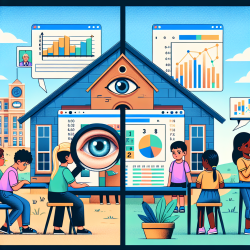Introduction
The COVID-19 pandemic has reshaped our understanding of public health and epidemiology. The research article "Assessing Early Heterogeneity in Doubling Times of the COVID-19 Epidemic across Prefectures in Mainland China, January–February, 2020" offers valuable insights into the dynamics of epidemic growth, which can be instrumental for practitioners in various fields, including speech-language pathology. By understanding these dynamics, practitioners can make data-driven decisions that enhance outcomes for children, particularly in the context of online therapy services like those provided by TinyEYE.
Understanding Doubling Time
Doubling time is a crucial metric in epidemiology, representing how quickly an epidemic grows. The study analyzed the doubling times of COVID-19 cases across different prefectures in China, revealing significant spatial heterogeneity. This means that the epidemic's growth rate varied considerably depending on the location, influenced by factors such as population size and density.
Key Findings and Their Implications
The study found that low-population prefectures had a higher per capita cumulative incidence of COVID-19 than high-population areas. This finding suggests that smaller communities may experience more rapid epidemic growth, which can be critical information for practitioners working in rural or less populated areas.
Moreover, the research highlighted the importance of spatial analysis in identifying clusters of high case counts and rapid epidemic growth. For practitioners, this underscores the need to consider geographical factors when planning interventions or therapy sessions, especially in a virtual setting.
Applying Research Insights to Practice
Practitioners can leverage these insights to improve their practice in several ways:
- Data-Driven Decisions: By understanding the factors influencing epidemic growth, practitioners can make informed decisions about resource allocation and intervention strategies.
- Geographical Considerations: Recognizing the impact of location on epidemic dynamics can help tailor interventions to the specific needs of different communities.
- Enhanced Outcomes: Applying these insights can lead to better outcomes for children, as interventions can be more precisely targeted and effective.
Encouraging Further Research
While this study provides valuable insights, it also opens the door for further research. Practitioners are encouraged to explore how these findings can be applied in their specific contexts and to contribute to the growing body of knowledge on epidemic dynamics and public health.
Conclusion
Incorporating data-driven insights from epidemiological research into practice can significantly enhance the effectiveness of interventions, particularly in the field of speech-language pathology. By understanding the dynamics of epidemic growth and applying this knowledge, practitioners can create better outcomes for children, even in challenging times.
To read the original research paper, please follow this link: Assessing Early Heterogeneity in Doubling Times of the COVID-19 Epidemic across Prefectures in Mainland China, January–February, 2020.










